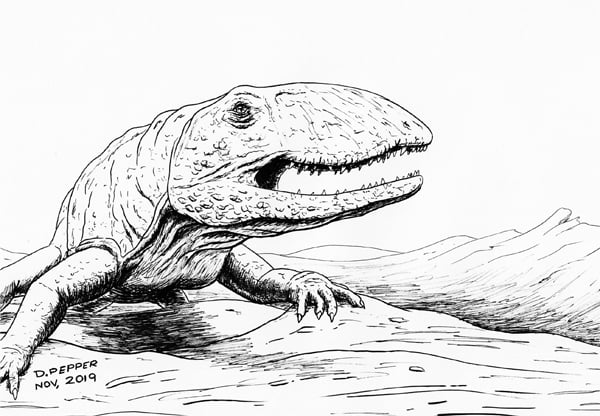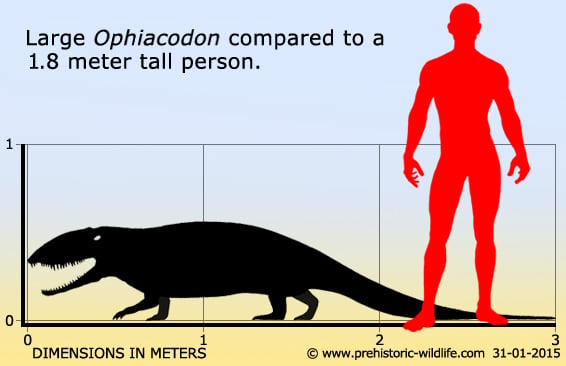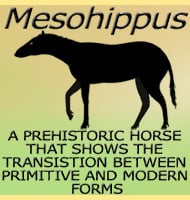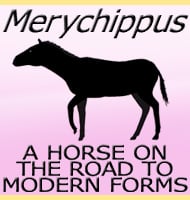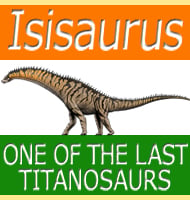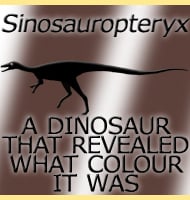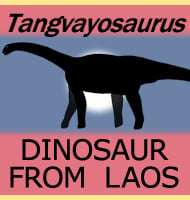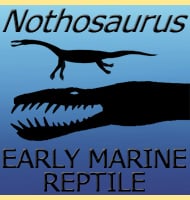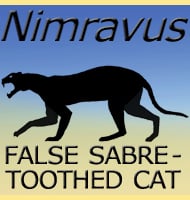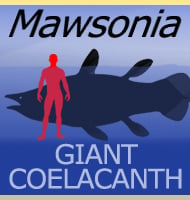In Depth
Although Ophiacodon lacked a sail like that on the more famous Dimetrodon, Ophiacodon was more of the standard morphology for the pelycosaurs. How Ophiacodon lived and hunted is still a matter of debate today with some claiming that it was a semi aquatic carnivore that fed on fish and amphibians. Support for this comes from the small and numerous teeth that would have been great for gripping slippery prey like fish. There is also a notch at the end of the upper jaw, a trait commonly seen in animals that have a piscivorous diet. Others however suggest that the deep skull would have been more of a hindrance and that the legs seem to support and lift the body up as opposed to just sprawling out from the sides, suggesting a primarily terrestrial locomotion.
Regardless of its chosen lifestyle, Ophiacodon was one of the more powerful predators of its day, and possibly only had to fear others of its own kind. The same deep skull is suggestive of powerful muscles capable of delivering a strong bite force. The teeth also show developing size variation that would become more pronounced in later pelycosaurs
Further Reading
– Descriptions of extinct Batrachia and Reptilia from the Permian formations of Texas. – Proceedings of the American Philosophical Society 17:505-530. – E. D. Cope – 1878. – An ophiacodont reptile from the Permian of Kansas. – Journal of Geology 33(2):173-182. A. S. Romer – 1925. – Size-independent criteria for estimating relative age in Ophiacodon and Dimetrodon(Reptilia, Pelycosauria) from the Admiral and lower Belle Plains formations of west-central Texas. – Journal of Vertebrate Paleontology 8 (2): 172–180. – D. Brinkman – 1988. – Ophiacodon long bone histology: supporting the Brinkman hypothesis. – Geological Society of America Abstracts with Programs 45 (3): 68. – C. D. Shelton – 2013. – Was Ophiacodon (Synapsida, Eupelycosauria) a Swimmer? A Test Using Vertebral Dimensions. – Early Evolutionary History of the Synapsida. Vertebrate Paleobiology and Paleoanthropology. p. 25. – R. N. Felice & K. D. Angielczyk – 2014.
